|
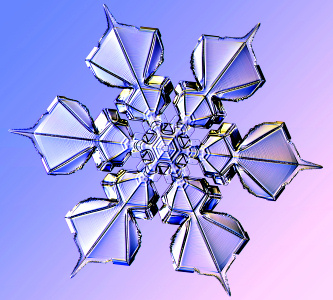
At left is a photograph of a designer snowflake -- a real sliver of ice, grown from water vapor, but
created under controlled conditions in the laboratory. They might also be called synthetic
crystals, but I call them designer snowflakes because I am free to
design the final shape by changing the temperature and humidity as the
crystal grows.
I
like to think of this as a new form of ice sculpture, except I am not
carving away from an initial block of ice, but rather growing a desired
structure by adding water vapor. I am bound by the rules of ice growth,
of course, so I cannot fashion any arbitrary shape. But I can make some
fine-looking snowflakes.
Creating designer snowflakes of this quality is
a new thing, so for now I have the dubious honor of being the world's
only snow crystal artist.
This page shows some photographs from my designer snowflake collection. | 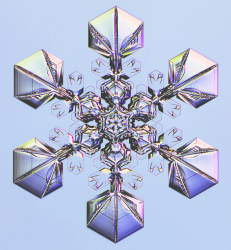 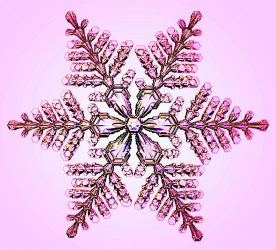 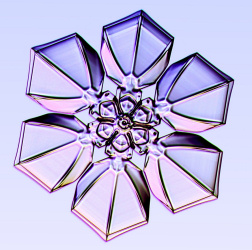 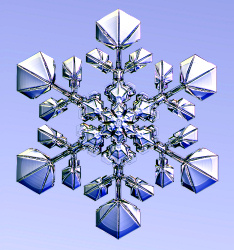 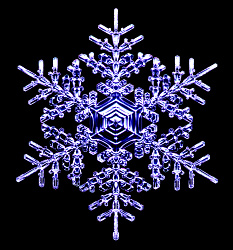 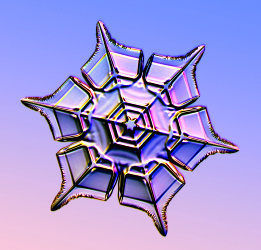 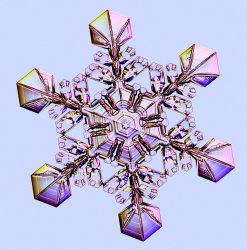 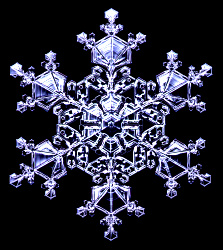 |
|
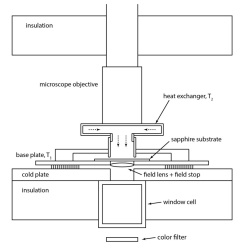
How does it work?
I
start by making a large number of tiny hexagonal ice crystals (see
Freezer Snowflakes) and dropping a few of them onto a sapphire substrate
(glass works fine also, but sapphire doesn't scratch as much). Then I
blow moist air gently down onto the crystal and watch it grow. The
diagram on the left shows the basic layout. The camera (not shown in
the diagram) sits above the microscope objective.
The camera's
live view goes to a TV monitor, so I can watch the crystal grow in real
time. A fast crystal might take 15 minutes to make, but I have let some
grow for 2-3 hours.
Since I photograph the crystals as they
grow, the facets and edges are sharp and distinct. Natural snow
crystals tend to have more rounded edges, since they evaporate a bit
once they leave the clouds.
|
| 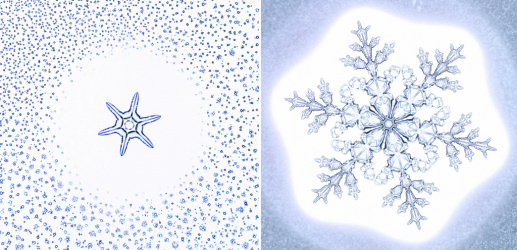 Sometimes
water droplets condense on the substrate, as shown in these photos. The
tiny droplets are like the fog you see when you breathe on a cold
mirror. Ice absorbs water vapor from the air, however, so no droplets
condense near the crystals. These two snowflakes measure 0.36 mm (left)
and 1.9 mm (right) from tip to tip. Sometimes
water droplets condense on the substrate, as shown in these photos. The
tiny droplets are like the fog you see when you breathe on a cold
mirror. Ice absorbs water vapor from the air, however, so no droplets
condense near the crystals. These two snowflakes measure 0.36 mm (left)
and 1.9 mm (right) from tip to tip.
I also call these Plate-on-Pedestal
crystals, because the ice plates actual grow above the substrate,
supported by tiny pedestals of ice at their centers. The structure
is shaped a bit like a broad, flat mushroom. The nub of ice supporting
the plates is minute -- about the diameter of a human hair. The much
large snowflakes balance on these tiny pedestals -- ice is
stronger than you might think, especially a single crystal of ice
|
|
Photographing with a plain white background yields blue-on-white snow crystals that I find quite attractive:
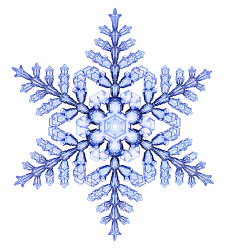 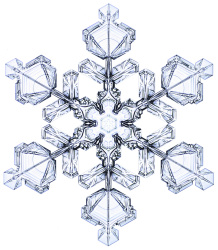 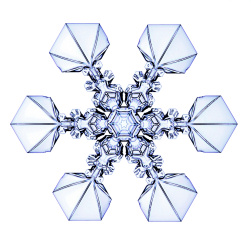 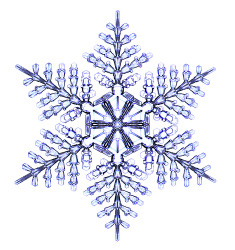 | Inverting the photos and playing with the colors gives some nice results also:
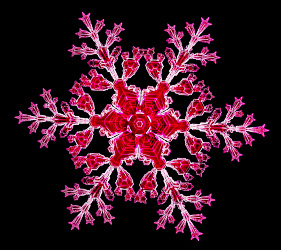 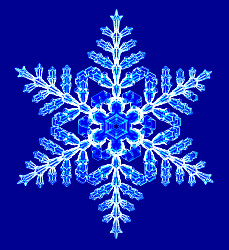 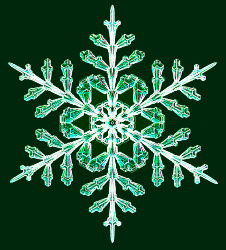 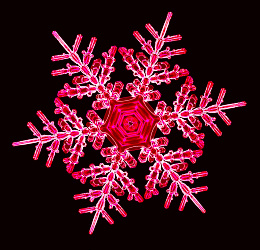 |
| 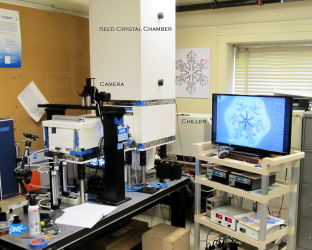
The Hardware
Making
designer snowflakes is a rather involved process, alas, and expensive
also. I use a recirculating chiller ($5k), several temperature
contollers ($2k each), and a lot of hardware designed and fabricated
just for this. |
| Reference
You can read all about the experimental apparatus in detail here:
An
experimental apparatus for observing deterministic structure formation
in plate-on-pedestal ice crystal growth, by Kenneth G. Libbrecht,
arXiv:1503.01019 (2015). | | | |
|
|
|
